Winging It

illustrations by Jamie Coe
ne evening a year, as a chill hits the air, Swarthmore’s campus transforms to a mystical land of fanciful beings and prehistoric beasts. Armed with the finest in foam weaponry, Swarthmoreans don trash bags to prepare for battle against their longtime foe: the pterodactyl.
Winging It
Winging It
illustrations by Jamie Coe
ne evening a year, as a chill hits the air, Swarthmore’s campus transforms to a mystical land of fanciful beings and prehistoric beasts. Armed with the finest in foam weaponry, Swarthmoreans don trash bags to prepare for battle against their longtime foe: the pterodactyl.
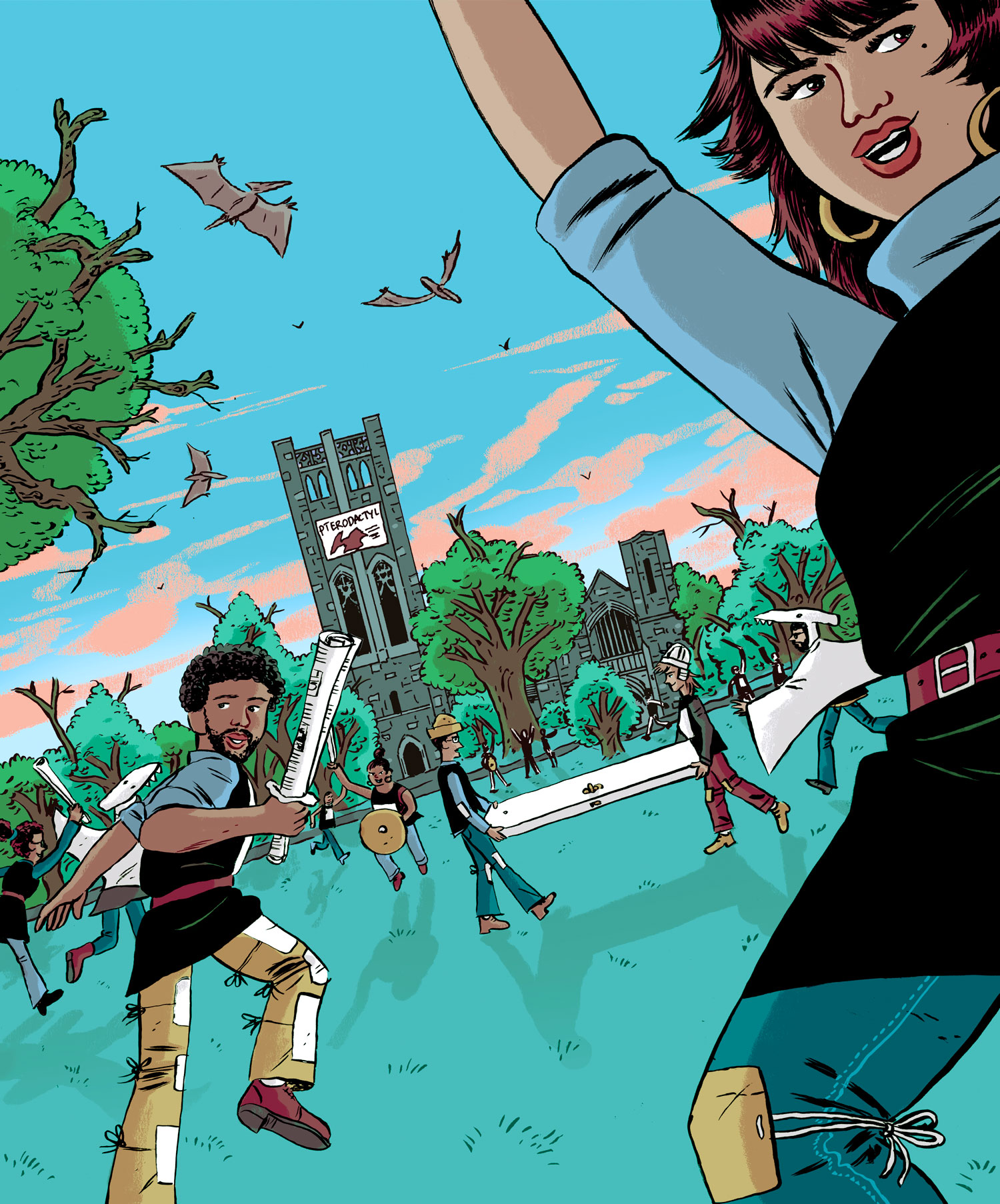
Part treasure hunt, part live-action role-playing game, the Pterodactyl Hunt is wholly Swarthmore, drawing students of all stripes on a mission to slay monsters — or to serve as mythical creatures themselves. Creative and quirky, the Hunt has grown into a beloved College tradition since its inception in the early ’80s.
However, the original event was less a Pterodactyl Hunt than a wild goose chase. It began as an elaborate prank that duped the student body while roping in an unwitting resident assistant. At the heart of the hoax was a firm reminder to balance college seriousness with occasional silliness.
A Hole Waiting to be Filled
Memories have grown hazy in the four decades since James LaTourrette ’81 was on campus, yet he distinctly recalls being annoyed that his friend group had been displaced from their regular Sharples Dining Hall seats. To get back at the underclassmen who had taken their table, the pre-med-turned-history major concocted an elaborate diversion.
That’s not how Cathy Jump Russell ’81 and Steve Daniels ’81 remember it, though: Instead, they say, the hoax was the culmination of years of pranks against their friend Bill Taibi ’81.
Either way, in spring 1980, LaTourrette and several others devised a plan to lead students on a campus “Pterodactyl Hunt” — a scavenger hunt of sorts that would end at Taibi’s room on Parrish Third. Pterodactyls had become a motif of LaTourrette’s time at Swarthmore, as he sometimes imagined them circling the skies above Crum Woods.
To spread the word about their event, the crew launched a stealth marketing campaign, plastering the campus with cryptic signs. Their pièce de résistance: a bed-sheet banner on Clothier Tower. LaTourrette employed the artistic help of Russell — “an exceptional artist for an astronomy major,” he notes — to paint a pterodactyl with a plea to “Join the Hunt.”
“James was the instigator of most everything,” says Russell, of Dracut, Mass. Late one night, LaTourrette brought the banner up the tower, accompanied by Russell’s now-husband, Greg ’81.
Practical jokes were popular on campus at the time “as a way to let loose and blow off steam,” says LaTourrette, a former lawyer from Loveland, Colo. It wasn’t uncommon for rogue banners like theirs to make their way onto Clothier. Daniels, now physics chair at Eastern Illinois University, heard stories from his older brother Dave ’76 about students hiding McCabe Library’s card-catalog drawers. Russell recalls transforming Old Tarble’s clock into a Mickey Mouse fixture, complete with ticking arms and legs.
Among this group of friends, largely science majors and members of Swarthmore’s Folk Dance Club, LaTourrette was often the ringleader behind lighthearted pranks, with Taibi usually the target. A onetime R.A., Taibi recalls returning to his room one night to find his door missing, completely removed from its hinges. On another occasion, his room was transformed into a pirate ship, with a plank going out the window.
“Maybe it was jealousy?” Taibi says with a laugh. “I honestly don’t know what I did to deserve all the love and attention.”
The pranks were never mean-spirited, LaTourrette insists, but they got a rise out of Taibi. Now a physician from Mount Sinai, N.Y., Taibi was known for his loud tirades … followed by deep laughter. As Taibi grew more focused on his pre-med studies, LaTourrette says, the group simply tried to remind him to let loose and have fun.
The “Pterodactyl Hunt,” however, took their pranking to a new level. LaTourrette hoped the scam would dupe about a half-dozen underclassmen. “Instead,” he says, “you couldn’t walk into Sharples without hearing some group asking about what it was or where they could find out about it.”
On the night of the “Hunt,” plagued with fear and a little guilt, LaTourrette stayed far away from the scene as throngs of students made their way to Scott Amphitheater. From there, the deceived participants followed a series of signs pointing “This way to the Pterodactyl Hunt!” At the end of the trail was one final sign: “Hunt canceled due to pterodactylian difficulties. For complaints, see Bill Taibi on Parrish Third.”
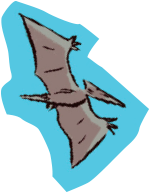
“When the first person knocked on Bill’s door, his comment was something to the effect of, ‘James is dead meat,’” says Daniels, who heard the commotion from his room. But Taibi ultimately took things in stride.
“It was just one in a series,” Taibi laughs, “and it didn’t take me nearly as long to get rid of them as it did to find my door.”
Only a few students made their way to the Hunt’s final destination, but the group learned two things from their ambitious stunt.
“The first was that running this big a hoax was quite stressful and not nearly as much fun as we thought it would be,” LaTourrette says. “The second was that there was a hole in campus life that our Pterodactyl Hunt was just waiting to fill.”
Fun Takes Flight
LaTourrette spent the summer corresponding with Russell and Daniels on how he could redeem himself, and repair his karma, by holding an actual Pterodactyl Hunt that fall. Borrowing elements from the newly popular Dungeons and Dragons, the group planned a role-playing treasure hunt in Crum Woods, where participants would battle monsters and the other “hunters.” “Dragons” would guard the treasure in the Cloisters, while “pterodactyls” would attack the hunters before revealing where the bounty lay.
“Steve came up with the idea for the first weapons to arm our hunters — rolled-up newspapers taped together,” LaTourrette says. “I bought some garbage bags to armor our pterodactyls and a little aluminum foil for decoration. All told, I think we spent less than $10.”
To spread the word among a skeptical student body, the friends publicized the Hunt’s rules beforehand, along with details of when and where it would take place. They also recruited participants from the Folk Dance Club and other groups, who would work in teams of six to retrieve the treasure.
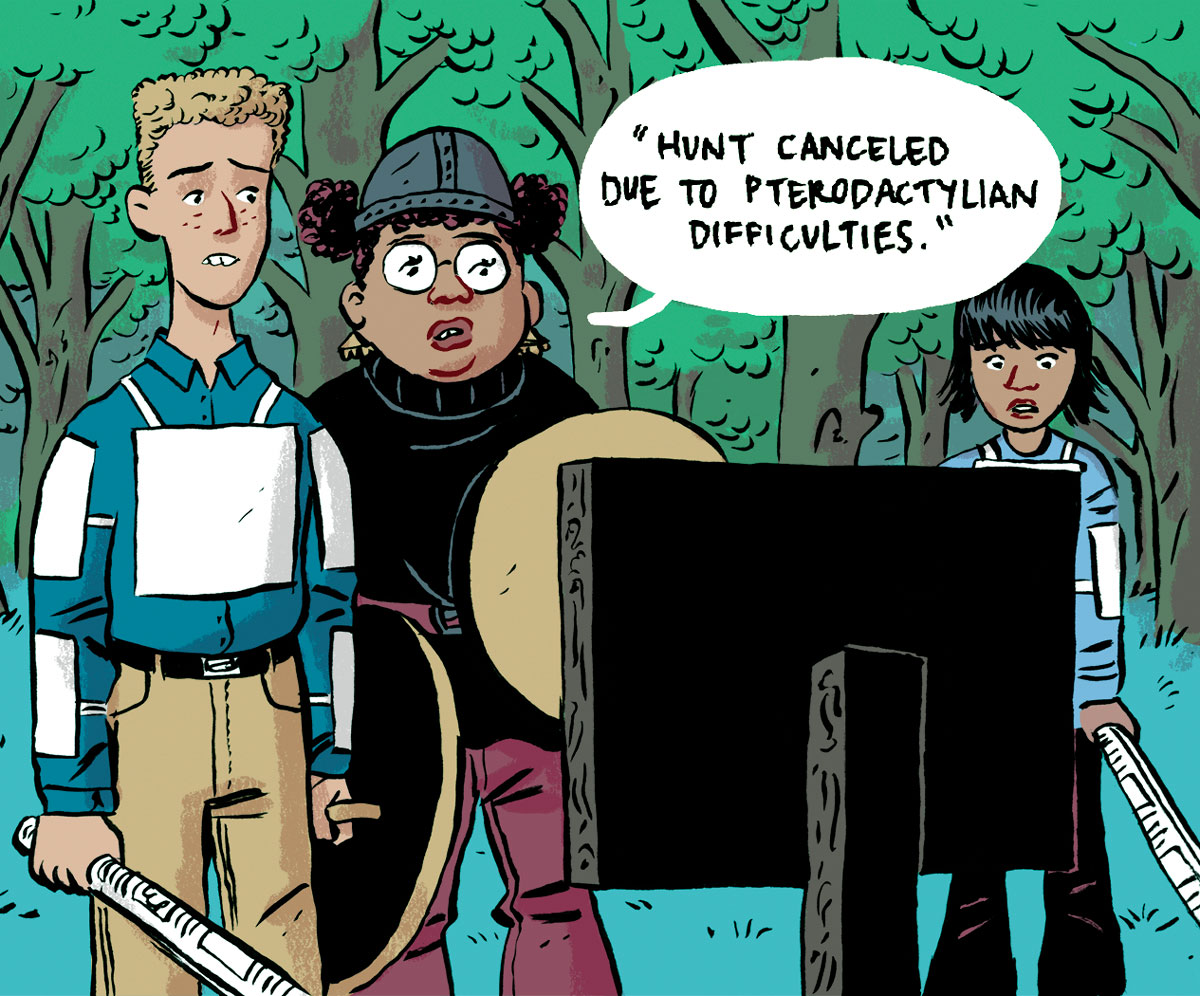
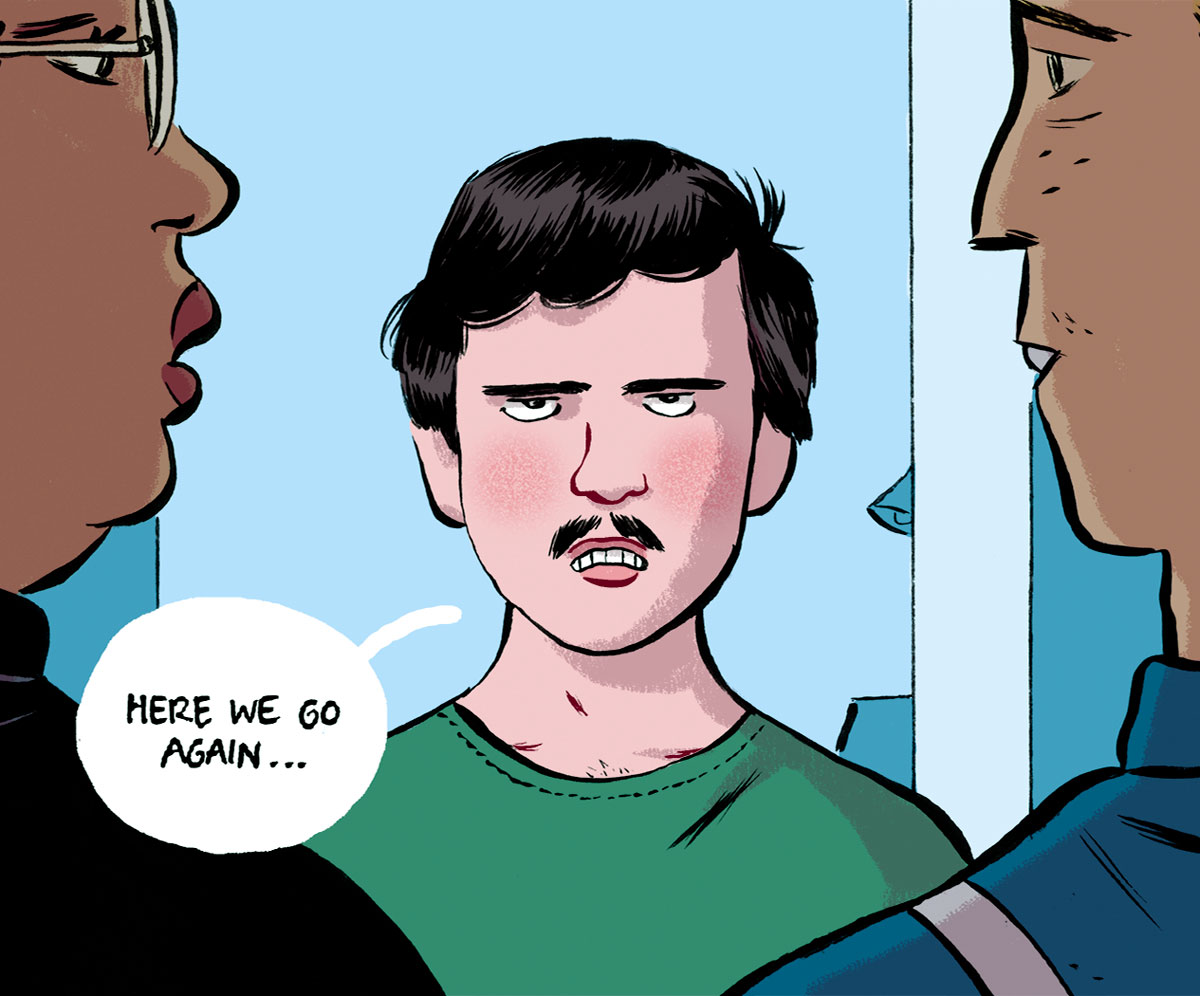
Daniels, a cross-country star, was one of two pterodactyls. Robin Hayden ’83, a sophomore, filled the role of a dragon, armed with acid breath (i.e., squirt guns) to slow the hunters down.
“The one clear memory I have is James telling me that one of the characters would be a troll, who was to be avoided at all costs because if he started talking to you, you were stuck there listening to him until something happened,” Hayden says.
To the friends’ surprise, roughly 60 students showed up to slay the pterodactyls. The treasure was taken, students had a good time, and no one got hurt. “I was hugely relieved,” LaTourrette says. “To this day, I’m still surprised that we pulled it off.”
LaTourrette planned a second Hunt in spring 1981 at the request of Student Council. Though fewer students took part and a new choice of weaponry ultimately failed, it too was a success.
“What I had not realized,” LaTourrette says, “is that I had given the Hunt enough of a foothold to start a tradition.”
Passing the Foam Sword
LaTourrette faintly remembers a third Hunt being planned after he graduated, organized by the science-fiction and fantasy club, the Swarthmore Warders of Imaginative Literature (SWIL). But he didn’t give it another thought for years, until an issue of the Bulletin caught his attention in 2005.
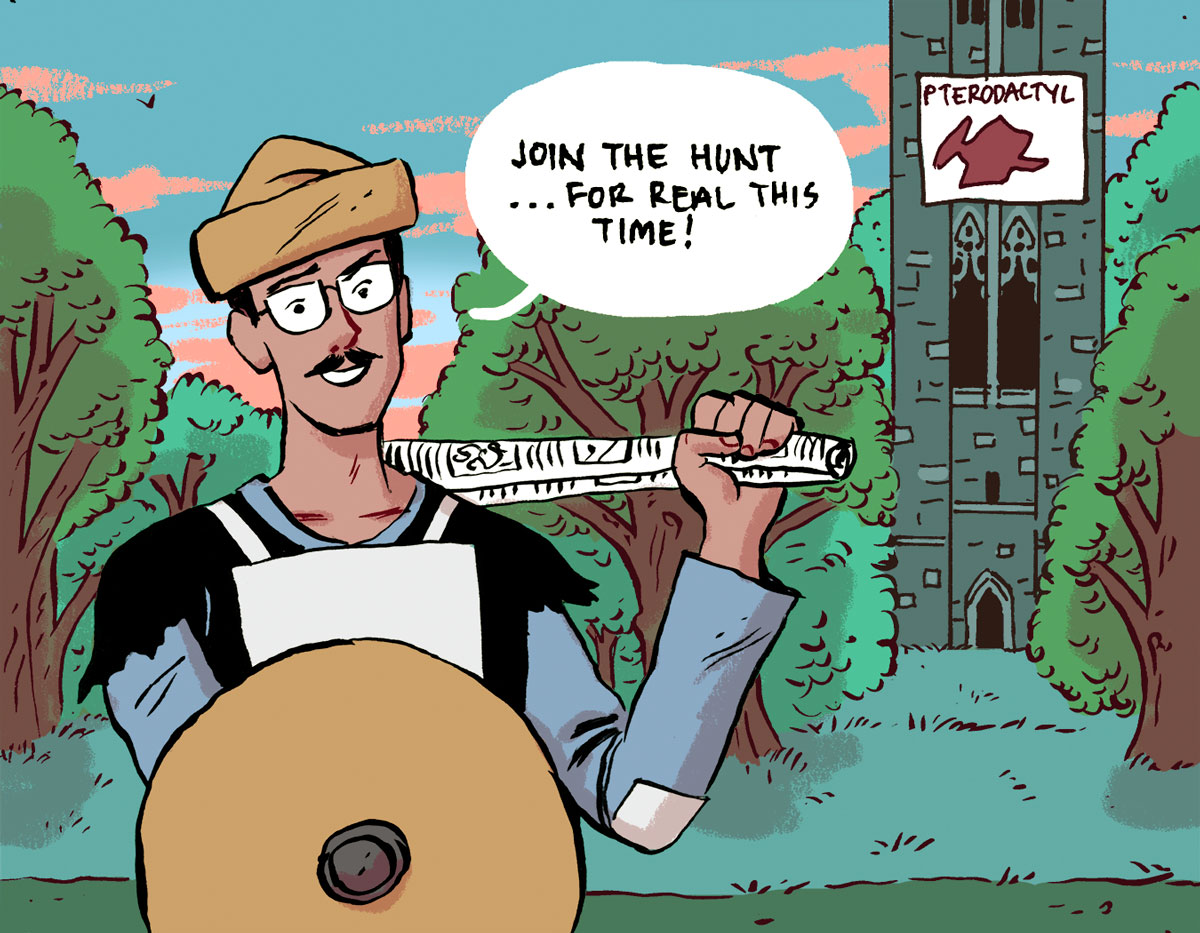
“There was an article about the 100 things you should do before you leave Swarthmore, and one was ‘Go on a Pterodactyl Hunt,’” he says. “On a scale of 1 to 10, my surprise level was about a 14.”
Russell had a similar reaction on a tour of Swarthmore with her daughter in the early 2000s. In one of the student lounges, Russell picked up a flyer … for a Pterodactyl Hunt. “I just about fell over,” she says. “I had a vague recollection that SWIL had taken it over, but I had no idea that it had blossomed and grown.”
These days, the annual Pterodactyl Hunt is organized by Psi Phi, a sci-fi club (get it?) that evolved from SWIL. The basic premise remains the same: fight the enemies, slay the pterodactyls, retrieve the treasure. A typical Hunt draws from 50 to 125 participants, cutting across a wide swath of Swarthmore’s student body. And that’s not including the 30 or so Psi Phi members who help make it happen, preparing costumes, creating set pieces, and filling fantasy roles.
“There’s something for everyone,” says Psi Phi regent (i.e., co-president) Lux Barton ’21. Fake combat, roleplay, and riddles are all draws — as is “the amount of stress relief that you can get from just running around hitting people with a foam sword.”
In hindsight, LaTourrette says he shouldn’t have been surprised that Swarthmore took to the Pterodactyl Hunt — a chance to succumb to make-believe, to fight stress along with mythical monsters, to put worries aside and act like a kid again, if only for a night.

“I had always thought it would be a one-and-done kind of thing,” LaTourrette says. “Establishing a tradition was never part of our goal.
“The coolest part is that the Hunt has adapted and changed with all the generations of Swarthmore students,” he adds. “It is a living tradition now, and not something that is mine anymore.”